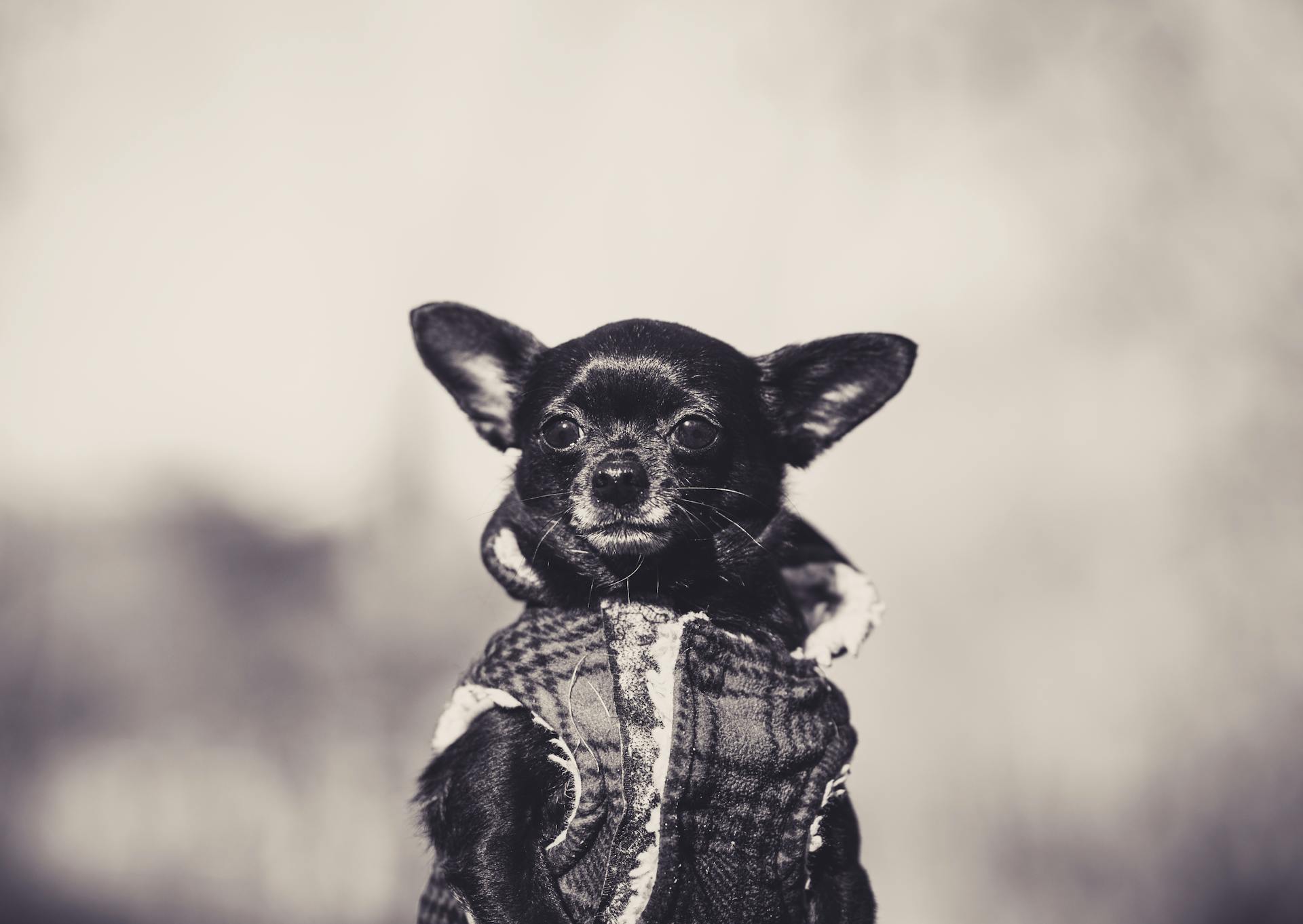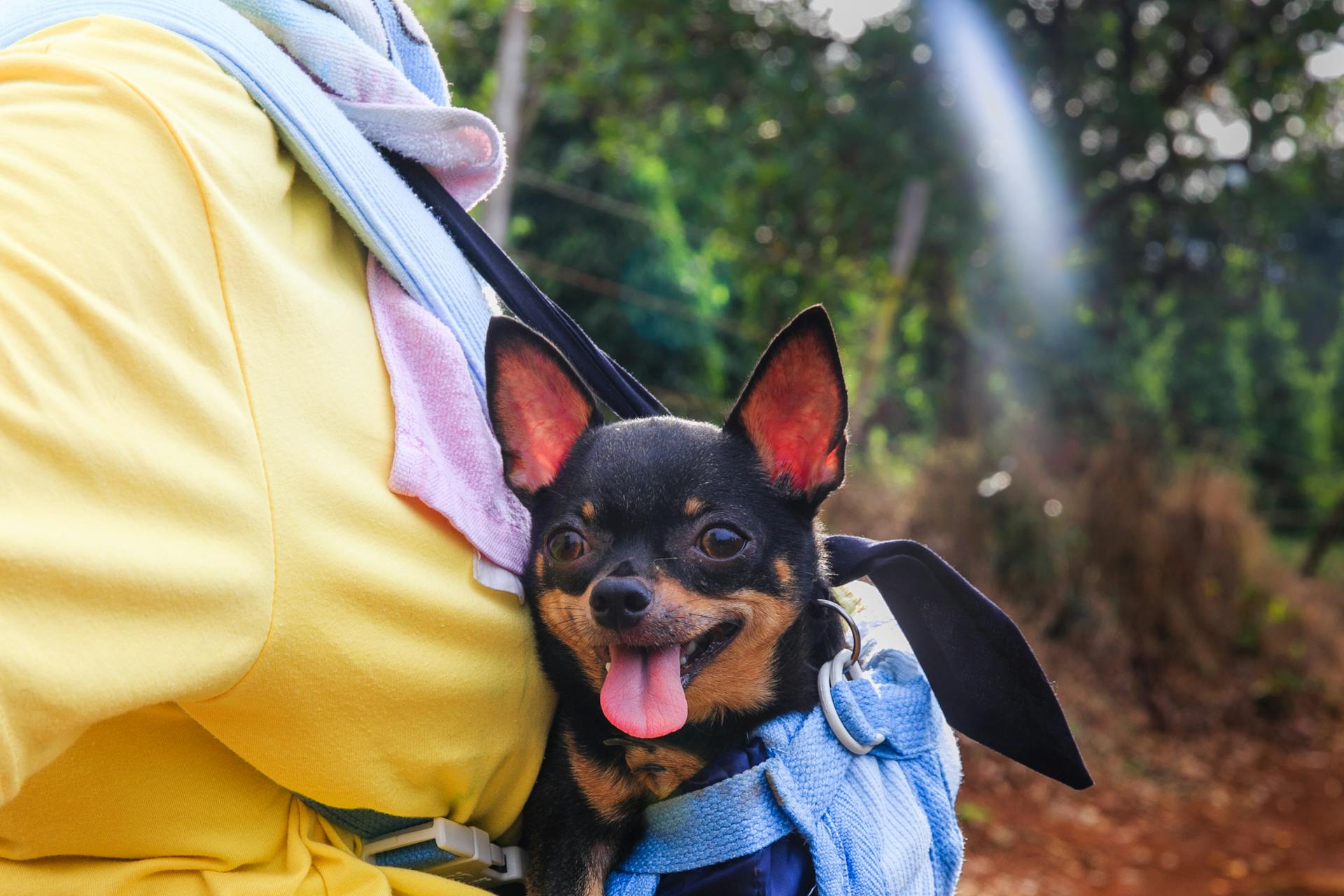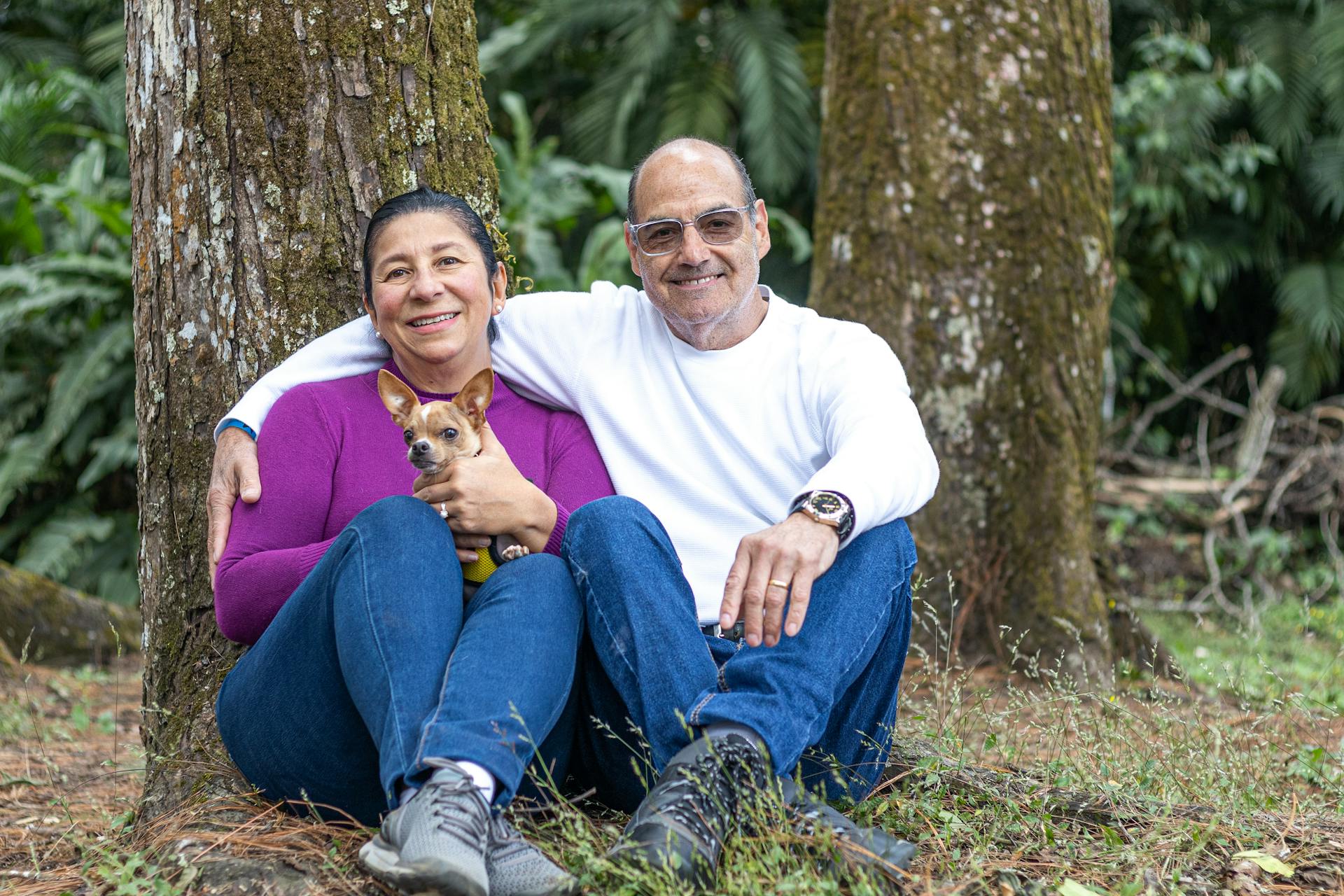
The Chihuahua dog originated in Mexico, specifically in the state of Chihuahua. Their exact age is unknown, but they are believed to be one of the oldest dog breeds in the Americas.
These dogs were highly valued by the ancient Toltecs and Aztecs, who believed they were a symbol of fertility and prosperity. The Aztecs even used them as a form of currency in some cases.
The name "Chihuahua" is derived from the state in which they were first discovered, and it's a testament to their rich history in Mexico.
History of Chihuahua Dogs in Mexico
The history of Chihuahua dogs in Mexico dates back thousands of years, with evidence of their existence found in ancient artifacts and burial sites.
Wheeled dog toys from 100 AD, discovered in Tres Zapotes, Veracruz, Mexico, are believed to depict both apple head and deer head varieties of the Techichi, an ancient breed that may have contributed to the modern Chihuahua.
Effigy pots and sculptures from 300 BC, found in Colima, Mexico, show a dog strikingly similar to the current day Chihuahua, suggesting a long history of dog breeding in the region.
The Aztecs are thought to have bred small dogs with the Xoloitzcuintli, a breed from Mexico, around the 11th century, possibly creating the modern Chihuahua.
Merchants began selling and trading Chihuahuas to American tourists in the 1800s, who would then bring these dogs back to the United States to keep as pets.
The Breed's Ancestry
The Chihuahua's ancestry is a fascinating topic, and scientists have made some remarkable discoveries about its origins. The breed's DNA has been studied, and researchers have found that a maximum of 30% of its DNA comes from non-American dog breeds.
The majority of the Chihuahua's DNA is shared with South American samples, specifically from the ancient Techichi breed. This breed was highly valued by the Toltecs for its hunting abilities and companionship.
The Techichi was also believed to possess supernatural powers, such as seeing into the future, which made it a sacred animal in ancient cultures. The breed's DNA has been linked to the Techichi through a phylogeographic analysis, which compares DNA from current dog breeds with archaeological samples from ancient dog breeds.
The Techichi was bred by the Toltecs for hunting purposes and for companionship, and it's believed that the Chihuahua's distinctive features and size can be traced back to these ancestral roots. The breed's small size, alertness, and strong personality are all characteristics that are evident in today's Chihuahuas.
Archaeological evidence supports the Chihuahua's ancient origins, including artifacts and burial sites found in Mexico that date back to the time of the Toltec civilization. Statues, pottery, and other artifacts depicting small dogs resembling the Chihuahua have been discovered, suggesting the existence of a breed similar to the modern Chihuahua as far back as the 9th century.
The Chihuahua's lineage is shrouded in mystery, but the connection to the ancient Techichi dogs of the Toltec civilization in Mexico provides the most apparent lineage to the modern Chihuahua. The Techichi was a small, sturdy, and silent dog, characteristics that are evident in today's Chihuahuas.
Consider reading: Dog Breeds Watch Dogs
The Spanish conquest of the Aztec Empire in the early 16th century had a profound impact on the indigenous peoples of Mesoamerica and their domestic animals, including the ancestors of the modern Chihuahua. The arrival of the Spanish brought with it chaos, disease, and the destruction of the Aztec civilization, which led to a significant decrease in the population of native dogs.
The ancestors of the Chihuahua managed to survive, largely due to their adaptability and the remote regions of Mexico where they could find refuge. These surviving dogs would eventually evolve into the Chihuahua we recognize today.
The Chihuahua's ancestors were also highly valued by the Aztecs, who believed that when an Aztec noble would die, it was necessary to slay a Chihuahua and bury or cremate it with the body of the human. They believed that the spirit of the dead Chihuahua would act as a guide through the afterlife for the soul of the dead noble.
The Breed's Development
The Chihuahua breed originated in Mexico, specifically in the states of Chihuahua and Durango, where they were highly valued by the ancient Mesoamericans.
Their small size was likely a result of being bred as companions for the Aztecs and Mayans, who considered them sacred animals.
The Chihuahua's distinctive head shape and large eyes were likely developed to make them more appealing to their human owners.
Two Varieties
It took over 50 years for the long and smooth coats to be exhibited at dog shows.
In 1952, the long and smooth coats were separated into two varieties.
The smooth coat was preferred as a pet variety.
Legendary breeder Anna B. Vinyard's La Oro Kennel produced national champions like Ch. Ai Si Ora Principe, which was a testament to the breed's growing popularity.
One year prior to the separation, Ch. Attas' Gretchen, a smooth coat Chihuahua, made history by winning the first all-breed Best in Show.
Their Job?
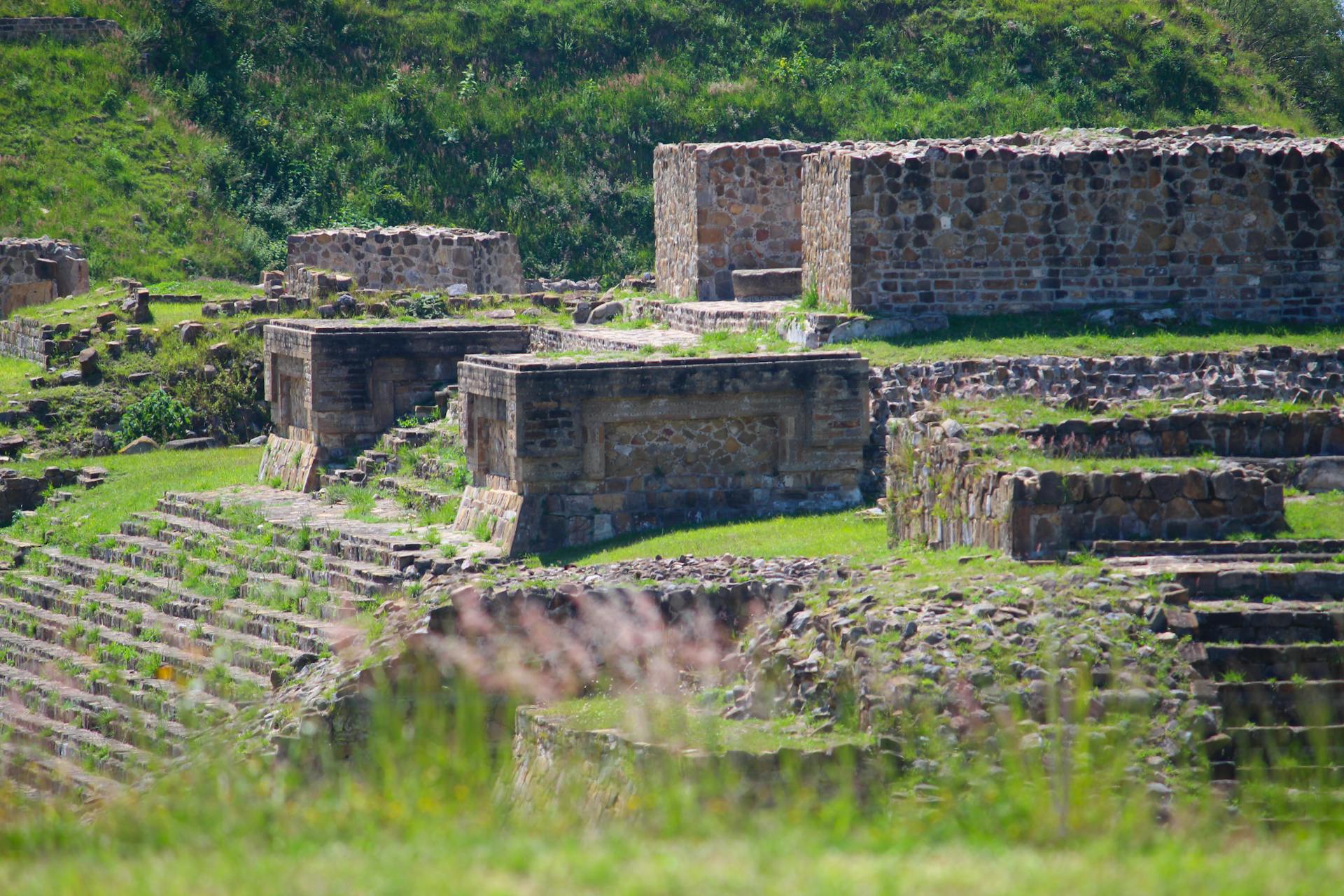
In the rural part of their native Mexico, Chihuahuas were kept as little ratters. They're fearless little ratters and will take down squirrels, rats, and other rodents.
Their innate skill is a mark of dog intelligence, allowing them to track and hunt without human training. They have the biggest brains in proportion to their body than any other dog breed.
Chihuahuas are much smarter than people think, and it shows in their ability to recognize and prefer the company of their own breed to any other breed of dog.
Expand your knowledge: Why Are Chihuahuas Called Chihuahuas
The Breed's History Outside of Mexico
The Chihuahua breed began to gain popularity outside of Mexico in the late 19th and early 20th centuries.
American tourists and traders who visited Mexico, particularly the state of Chihuahua, discovered the breed and were charmed by its small size and spirited nature. They started bringing Chihuahuas back to the United States, where the breed's popularity quickly spread.
The first Chihuahua registered by the American Kennel Club (AKC) was in 1904, marking the official recognition of the breed in the United States.
U.S
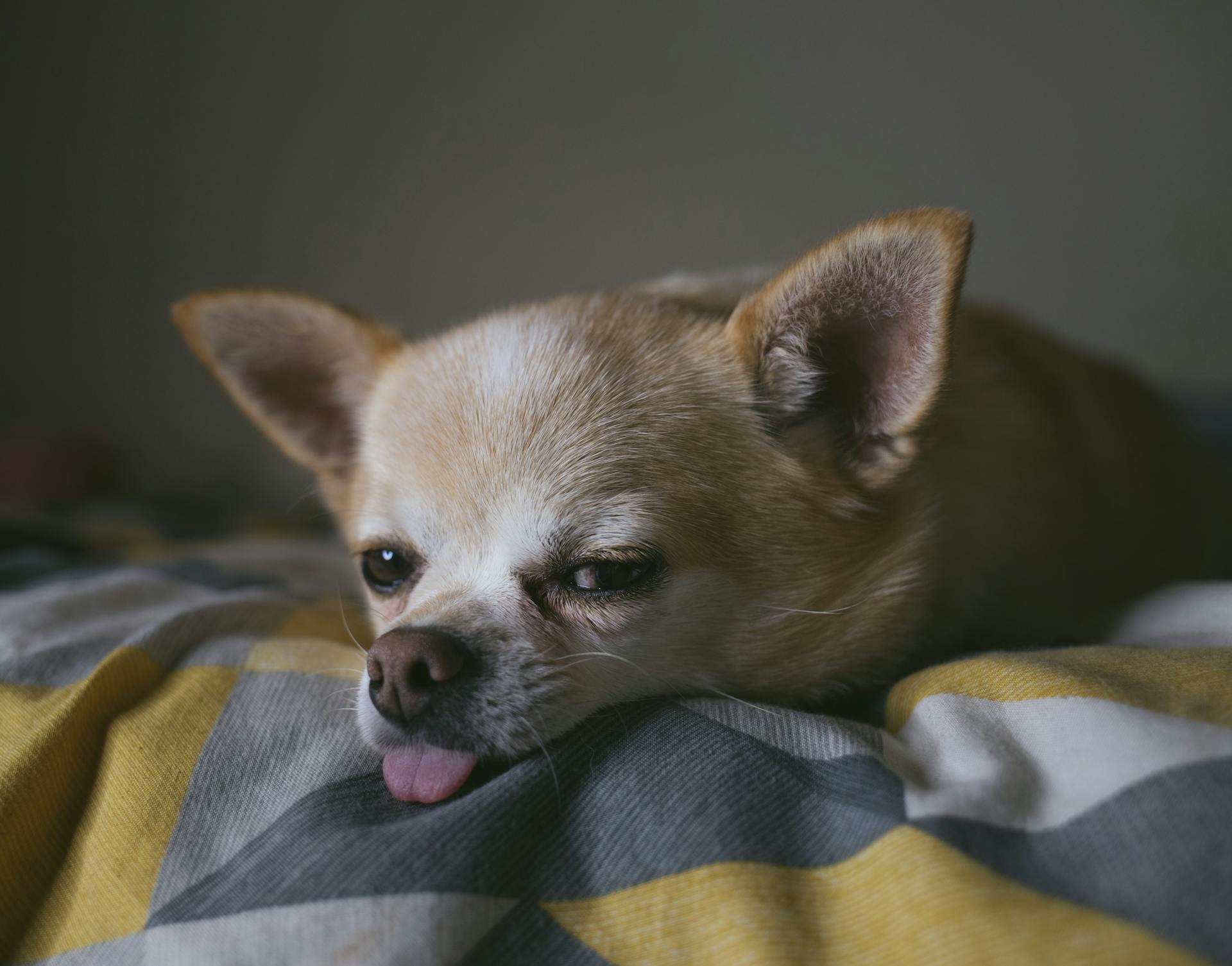
By the 1800s, people in the U.S. began to take interest in the Chihuahua breed. The first recorded import of a Chihuahua to the U.S. was "Manzanita" in 1888.
James Watson, an author and judge, purchased Manzanita, and Owen Wister imported a Chihuahua named "Caranza", which became the dog that produced the famous bloodlines, Meron and Perrito. Long coats were surprisingly more common among early imports than smooth coats.
The American Kennel Club (AKC) recognized the breed in 1904, with the first registered Chihuahua being "Midget", owned by H. Raynor of Texas. Within a couple of years, the breed had its first champion, "Beppie", owned by Mrs. L. A. McLean of New Jersey.
The Chihuahua Club of America was founded in 1923 to develop a community of Chihuahua breeders and further the breed in the United States. Its founders included notable members like Helen Nowicki, a Chihuahua breeder and editor of Dog World magazine.
Mrs. Dobbs was instrumental in establishing the annual specialty show, which was first conducted on May 19, 1928, at the Queensboro Kennel Club show with 42 dogs entered. Two of the most well-noted Chihuahuas are Ch. Tejano Texas Kid and Ch. Holiday Gold Jubilee.
Ch. Holiday Gold Jubilee, aka "Doc Holiday", is notable for being the first Chihuahua to be ranked as number one in the Toy group in the United States.
When Did the Breed Become Popular Outside of Mexico?
The Chihuahua's popularity outside of Mexico began in the late 19th and early 20th centuries. American tourists and traders who visited Mexico, particularly the state of Chihuahua, discovered the breed and were charmed by its small size and spirited nature.
These visitors started bringing Chihuahuas back to the United States, where the breed's popularity quickly spread. The first Chihuahua registered by the American Kennel Club (AKC) was in 1904, marking the official recognition of the breed in the United States.

The early 20th century saw a significant increase in the breed's popularity, with Chihuahuas becoming fashionable pets among the American upper class and celebrities. The breed's endearing qualities, combined with its exotic origins, contributed to its appeal, making the Chihuahua a cherished pet in households across the United States and eventually around the world.
Modern Companion
The Chihuahua's transition into a modern companion began in earnest in the early 20th century. As the breed's popularity grew in the United States, so did the variety of sizes and coat types, leading to the distinction between the Smooth Coat and Long Coat Chihuahuas.
The American Kennel Club officially recognized the Chihuahua breed in 1904. This solidified its status as a cherished companion animal.
Frequently Asked Questions
Did the Aztecs keep Chihuahuas?
Yes, the Aztecs kept Chihuahuas as pets, particularly among the nobility. These sacred dogs were often buried or cremated with their owners upon death.
Why do Mexicans love Chihuahuas?
The Toltec people of ancient Mexico revered these small dogs as sacred animals, often keeping them as beloved companions. This cultural significance may have contributed to the enduring popularity of Chihuahuas in Mexico.
Are Chihuahuas the oldest dog breed?
Chihuahuas are one of the oldest dog breeds in the Americas, with a lineage dating back to pre-Columbian times. Their ancient heritage makes them a unique and fascinating breed.
Sources
- https://planetchihuahua.com/facts-trivia/chihuahua-history-mexico/
- https://www.akc.org/expert-advice/dog-breeds/chihuahua-history-aztec-companion/
- https://iheartdogs.com/the-history-and-origin-of-the-chihuahua-a-comprehensive-look/
- https://drbillspetnutrition.com/dog-breed-spotlight-chihuahua/
- https://www.chichisandme.com/the-ultimate-guide-history-chihuahuas/
Featured Images: pexels.com
